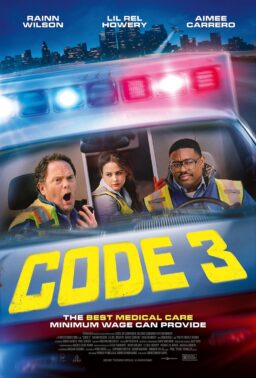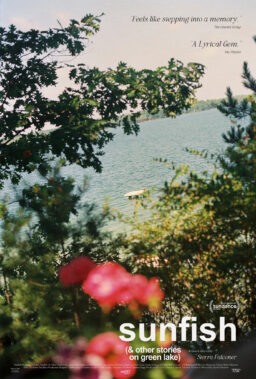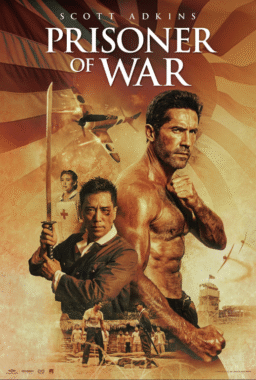The morning after its audience had been given a shot of adrenaline with Andrew Davis’ opening night film “The Fugitive,” Ebertfest had its own blockbuster event in the form of 14 critics talking about the state of their profession. As led by moderator Claudia Puig, the panel included Leonard Maltin, Nell Minow, Richard Roeper, Sheila O’Malley, Matt Zoller Seitz, Susan Wloszczyna, Sam Fragoso, Michael Phillips, Sarah Knight Adamson, Brian Tallerico, Scott Mantz, Rebecca Theodore-Vachon and Matt Fagerholm.
The subtitle for the event was “The Future of Criticism,” but given the the passion from the chorus of watchers and film-lovers, it concerned the state of movies itself. The lively active audience covered an expansive list of topics, including: the pros and cons of Netflix, given the accessibility of their material but the smaller screens; the Ava DuVernay test and the Bechdel test; the ultimate mission of the critic; our evolving attention spans as parallel by a growing amount of movies available each week; a hope for the industry to better embrace diverse narratives and diverse filmmakers.
At the end of the panel, Puig asked the critics to share what they think is the worst and the best thing about being a critic. The answers that came from the worst thing came from problems that reflect the current state: the changing amount of jobs and pay; an overwhelming amount of movies despite the desire to see them all; that people are criticizing movies based on trailers; and having to see a lot of bad movies, among others.
But the best thing about being a critic seemed to bring out the future of criticism, with everyone sharing their excitement about their work and a pride in their field. There was excitement about being able to advocate films that they love, the sense of community, the transporting quality of a good film and more. As Sheila O’Malley stated, “The best thing about being a film critic is that I am a film critic.”
After an extensive hour-long conversation, the panel was opened up to audience questions. When an audience member asked how to get paid for writing about film, Rebecca Theodore-Vachon advised to have a platform for your writing, and the need to network. She also emphasized the need to follow editors and the people they follow on social media, and to send pitch letters.
When asked about what makes an effective critic, Leonard Maltin said that “you must have love, passion and knowledge.” It was a fitting response given values of those on the panel. But those qualities could also help define what made the second day’s film choices so powerful, whether it was “Interstellar,” “Selena” or “Belle.”
The first film of the day was Christopher Nolan’s galaxy-hopping sci-fi epic “Interstellar,” as presented with an incredible 70mm print. But before that movie started, the crowd at Ebertest heard from the filmmakers of “Disturbing the Peace,” a documentary about the Israeli/Palestinian conflict that premiered at Ebertfest a couple of years ago. Co-director Stephen Apkon shared an update about the film, which has been on an “extraordinary two-year journey” since starting at Ebertfest. Among the exciting details about the film’s saga is that it is has screened for six consecutive months in Palestine and Israel, and is now available in 23 languages. They also mentioned that there was a screening in which the film was projected on the West Bank wall, with Israelis and Palestinians watching the movie “under a full moon and starred sky.” They said that it was a life-changing event, especially with the standing ovation that they received. It’s a special honor and memory to think that such a significant film started at Ebertfest.
That importance of empathy then played out on a massive screen and over the course of three hours with “Interstellar,” which was introduced by our own Brian Tallerico as “the perfect film for a festival about empathy … the rare sci-fi film that’s about emotion and connection.” After the screening, Tallerico was joined by Scott Mantz and Chaz Ebert to talk to the festival’s guests for the film, two astrophysicists—University of Illinois’ own Brand Fortner and Professor Miguel Alcubierre.
Given their wealth of knowledge in the field of science that “Interstellar” explores so vividly, they were able to speak to the validity of the story, but also to its emotional power. Fortner said that the movie was a strong mixture of reality and not reality, while saying that the idea of leaving Earth one day is a reality that the human race will eventually face.
Fortner praised the movie for its emotional intelligence as well, saying that “it takes real science and mixes that with a deeply emotional, resonant story. It bypasses our brains and hit us in the gut; it’s only by getting close to that reality that we can create emotional impact.”
Alcubierre, one of the top relativists in the world as someone who studies black holes and black hole collisions, also boasted a unique connection to the film. His supervisor’s supervisor was Kip Thorne, the astrophysicist who directly inspired the screenplay Christopher Nolan constructed. He praised the movie for its scientific knowledge, noting that “they show science as it really is.”
In the afternoon, the Ebertfest crowd was treated to a special screening of “Selena,” a biopic about the famous Tejano singer, with writer/director Gregory Nava in attendance. Nava introduced the film, which was released in 1997 but has become even more popular over time, and one of the most-played movies on cable. Nava mentioned to a crowd of Ebertfest viewers that he wanted to make a positive film out of the tragedy of Selena Quintanilla. Before “Selena” started (a print of his own that he had shipped from the Academy), Nava presented an original poster from the film, signed by Jennifer Lopez and Nava, expressing their gratitude for the film being programmed at Ebertfest.
After the screening, Nava was asked questions on stage by Monica Castillo and Claudia Puig. He discussed how Lopez came into the project, starting with Nava’s refusal to cast a non-Latina to play the role. Nava shared that in Lopez’s audition process she had studied the various dance moves and “imitated Selena at all the various periods in her career.” He championed her dedication to the role of Selena, and how the studio refused to put money into an Oscar campaign for her work. Nava did mention, however, that the massive scene with Lopez performing as Selena in the Astrodome for thousands of people (who showed up for nine hours and for free, Nava mentioned) directly inspired Lopez’s own music career. “I want that, I want to do that,” he recalls her saying, before she went on to one day have both the #1 movie and the #1 song in America in the same week.
When discussing the film, Nava shared how much of the script comes from real stories with Selena and her family, including the scene where Selena and her boyfriend Chris decide to elope. He did mention one scene that was very much his own idea, which is also one of the movie’s most powerful—a discussion that Edward James Olmos’ patriarch Abraham has with Selena and brother Abie about being Mexican-American. Nava shared that he’s always wanted a way to put that idea across, of not feeling Mexican or American enough as Mexican-American. As someone who was born on the border and grew up in San Diego but would go to Mexico “three times a week,” Nava said “that’s my reality.”
It’s clear years later how much the film means to so many people, honoring Nava’s original goal of making a “universal human statement,” but featuring people who do not see themselves often represented in popular media. In sharing the moment he knew he wanted to make this film, Nava expressed that he was at first uncertain, but then he saw a couple of young Latinas who were wearing Selena shirts. When he asked them why they love Selena, they replied, “because she looks like us.”
The last film of the evening brought out one of the festival’s very special guests, Amma Asante, director of the period piece “Belle,” about a mixed-race woman who is raised by her aristocratic great-uncle in 18th century England. Asante was joined on-stage by Rebecca Theodore-Vachon and Chaz Ebert for a Q&A to talk about the true history behind the film, its period look and the discussions the filmmakers had about how to handle the story’s inherent ideas of racial identity.
As a filmmaker who has gravitated towards writing and directing her own films, she expressed how there seem to be two different ways to direct, as “insider” and “outsider.” She said that she felt like an outsider directing her previous movie “A United Kingdom,” but with “Belle” that the material came from the inside, saying that “I felt like I knew what it might be like to walk in the shoes of a black British woman in 18th century London.”
When asked about the current situation for women in film, Asante spoke proudly about the impact of “Belle.” “I think the tide is changing,” she said. “And I’m going to go ahead and take some credit for that.”
A lot has changed since she first started directing she said, but she shared the previous challenge of getting trust from the crew, saying that she used to have the problem of “constantly being questioned.” Now with four films under her belt, she added, “I do not answer those questions any more.” As for other aspiring women filmmakers, Asante encouraged the idea of going out and making a movie. “Get out there and don’t wait for the projects to come to you,” she advised, while emphasizing that “the story you want to tell is unique.”












